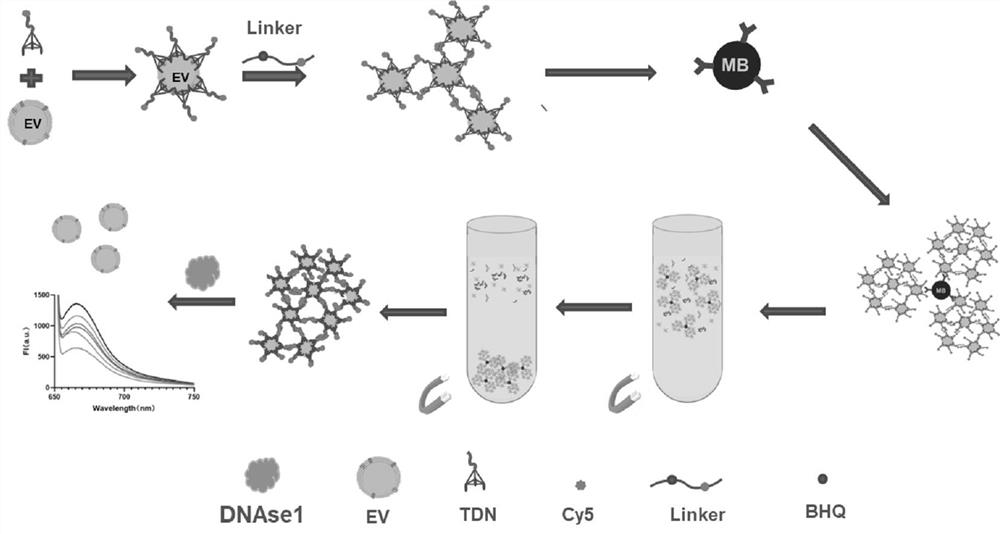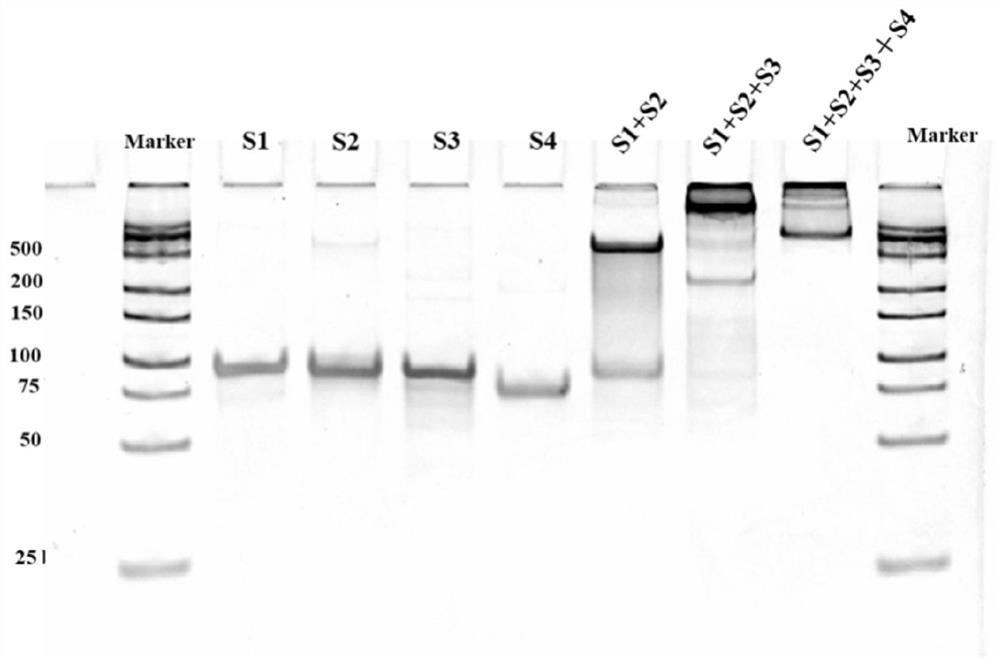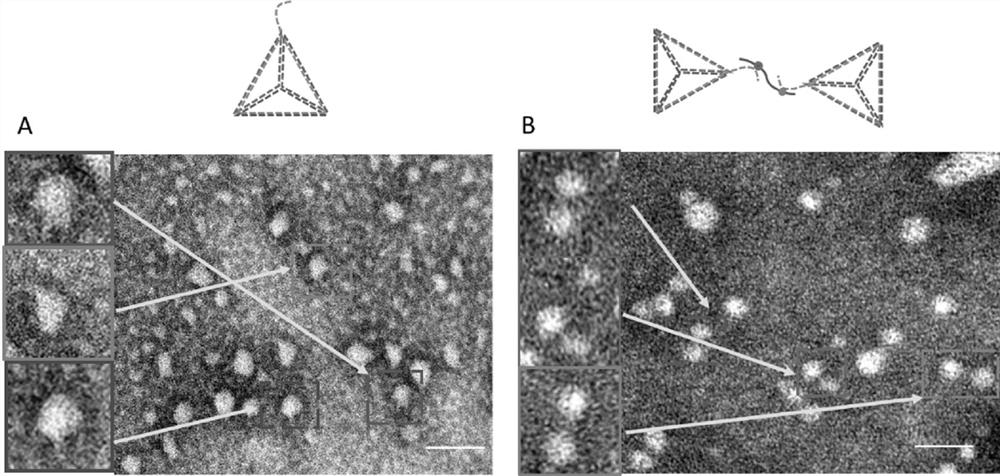Extracellular vesicle enrichment detection method
A detection method and enrichment technology, applied in the field of medical detection, can solve the problems of low purity and recovery, poor effect, low efficiency, etc.
- Summary
- Abstract
- Description
- Claims
- Application Information
AI Technical Summary
Problems solved by technology
Method used
Image
Examples
Embodiment 1
[0044] Example 1 A kind of extracellular vesicle enrichment detection method
[0045] Experimental materials: DNA nucleic acid manufacturer is Shanghai Sangong, magnetic bead manufacturer is Thermo Fisher Scientific, antibody manufacturer is Proteintech, six-well plate manufacturer is Jingan Biological J06001;
[0046] TM buffer: containing 20mM Tris and 50mM MgCl.
[0047] figure 1 For the experimental schematic diagram of the present embodiment, the method of the present embodiment comprises the following steps carried out in sequence:
[0048] S1: DNA tetrahedron synthesis:
[0049] Design four DNA oligonucleotide chains L1, L2, L3 and L4, among which L1, L2 and L3 are modified with CD63 aptamers to assemble into the specific bottom of DNA tetrahedron, and the top of L4 has a binding site for the link chain Linker point, to be combined to form a protruding free chain, which acts as a link;
[0050] The DNA sequences involved are shown in Table 1;
[0051] The four DNA ...
Embodiment 2
[0071] Example 2 A kind of extracellular vesicle enrichment detection method
[0072] Example 2 is a method for detecting the enrichment of extracellular vesicles, which is basically the same as Example 1, except that step S3 is different, and other steps are the same. Step S3 of this embodiment is specifically:
[0073] S3: Extract exosomes:
[0074] Take the suspended cells, collect the cells by centrifugation, bounce the cells vigorously, add the lysate according to the ratio of 100-200 μL lysate per well of the six-well plate, and flick to fully lyse the cells until there is no obvious cell precipitation, remove Wash the culture medium once with PBS and normal saline to remove impurities, disperse the cells, add the lysate according to the ratio of adding 100mL (200uL for 6cm petri dish) to each well of the six-well plate, fully lyse on ice for 25min, and then centrifuge at 10000g for 3min. The extracted supernatant, which contains the exosomes to be enriched, can be subj...
Embodiment 3-5
[0075] Example 3-5 Extracellular vesicle enrichment detection method
[0076] Examples 3-5 are respectively a method for detecting extracellular vesicle enrichment, which are basically the same as in Example 1, except that the specific aptamers selected in Example 3-5 are CD9, CD91 and EPCAM in sequence specific aptamers.
PUM
| Property | Measurement | Unit |
|---|---|---|
| diameter | aaaaa | aaaaa |
Abstract
Description
Claims
Application Information
 Login to View More
Login to View More - R&D
- Intellectual Property
- Life Sciences
- Materials
- Tech Scout
- Unparalleled Data Quality
- Higher Quality Content
- 60% Fewer Hallucinations
Browse by: Latest US Patents, China's latest patents, Technical Efficacy Thesaurus, Application Domain, Technology Topic, Popular Technical Reports.
© 2025 PatSnap. All rights reserved.Legal|Privacy policy|Modern Slavery Act Transparency Statement|Sitemap|About US| Contact US: help@patsnap.com



